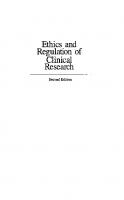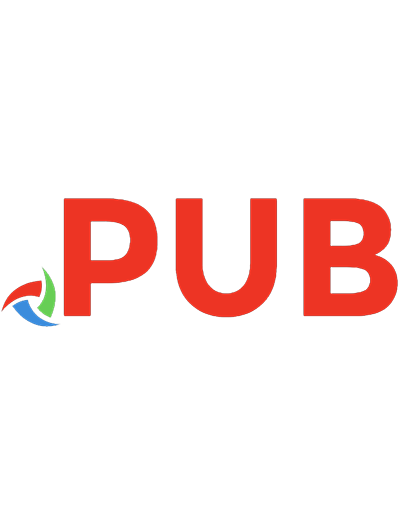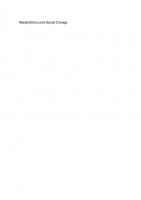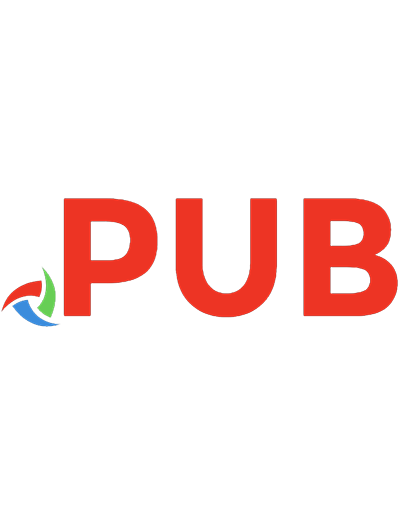Media Ethics and Regulation [1 ed.] 9781922084064, 9781922084057
The media landscape is changing rapidly. In this new digital age, the mass media is undergoing major structural changes
165 14 6MB
English Pages 65 Year 2017
Polecaj historie
Citation preview
Volume | 354
Media Ethics and Regulation
Edited by Justin Healey
Media Ethics and Regulation
Edited by Justin Healey Volume | 354
First published by PO Box 438 Thirroul NSW 2515 Australia www.spinneypress.com.au © The Spinney Press 2013.
COPYRIGHT All rights reserved. Other than for purposes of and subject to the conditions prescribed under the Australian Copyright Act 1968 and subsequent amendments, no part of this publication may in any form or by any means (electronic, mechanical, microcopying, photocopying, recording or otherwise) be reproduced, stored in a retrieval system or transmitted without prior permission. Inquiries should be directed to the publisher. COPYING FOR EDUCATIONAL PURPOSES Educational institutions copying any part of this publication for educational purposes under the Copyright Act 1968 must be covered by a Copyright Agency Limited (CAL) licence and must have given a remuneration notice to Copyright Agency Limited. Licence restrictions must be adhered to. For details of the CAL licence for educational institutions contact: Copyright Agency Limited, Level 15, 233 Castlereagh Street Sydney NSW 2000 Telephone: (02) 9394 7600 Fax: (02) 9394 7601 Website: www.copyright.com.au National Library of Australia Cataloguing-in-Publication entry Title:
Media ethics and regulation [electronic resource] / edited by Justin Healey.
ISBN:
9781922084064 (ebook : pdf)
Series:
Issues in society (Balmain, N.S.W.) ; v. 354.
Notes:
Includes bibliographical references and index.
Subjects:
Mass media--Moral and ethical aspects--Australia. Mass media--Australia--Self-regulation. Government and the press--Australia. Press--Australia. Australian newspapers.
Other Authors/Contributors: Healey, Justin. Dewey Number:
302.230994
Cover illustrations: Courtesy of iStockphoto.
Contents CHAPTER 1
MEDIA ETHICS AND ACCOUNTABILITY Kicking at the cornerstone of democracy: the state of press freedom in Australia Media Alliance Code of Ethics General statement of principles – Australian Press Council How regulation works Broadcasting content regulation Regulation and codes of practice for Australian commercial radio Advertising standards – frequently asked questions Australian Association of National Advertisers Code of Ethics Report recommends a new national classification scheme Meeting the classification challenge for twenty-first century media Report of the Independent Inquiry into the Media and Media Regulation The Finkelstein inquiry into media regulation: experts respond Finkelstein findings all very good in theory Finkelstein inquiry report cause for ‘cautious optimism’ Consumers of news singularly unprotected Time to jolt thick-skinned media into action Finkelstein inquiry too flawed to lead to real reform Finkelstein report seeks to stifle free press Code of ethics trumps any media council Finkelstein media recommendations would poison our democracy Media regulation debate clouded by appeals to simplistic notions of free speech
CHAPTER 2
1 3 4 5 6 9 10 11 13 14 16 18 20 22 23 25 26 28 29 30 31
MEDIA OWNERSHIP AND CONVERGENCE Media ownership in Australia Australian entertainment and cross-media ownership Media ownership matters: why politicians need to take on proprietors Media monoliths and the sound of one hand clapping Does it matter who owns our papers? Yes it does Content and competition in a changing media world The Convergence Review: regulation of media and internet content Convergence Review: final report recommendations Media rule book must make room for change and give regulator teeth Media users should have say in regulation Meeting the challenge of convergent media policy
32 35 36 38 39 41 43 45 48 50 51
Exploring issues – worksheets and activities Fast facts Glossary Web links Index
53 57 58 59 60
Introduction Media Ethics and Regulation is Volume 354 in the ‘Issues in Society’ series of educational resource books. The aim of this series is to offer current, diverse information about important issues in our world, from an Australian perspective. KEY ISSUES IN THIS TOPIC The media landscape is changing rapidly. In this new digital age, the mass media is undergoing major structural changes in how it delivers news, information and entertainment in Australia and around the globe. Media organisations are reconfiguring their business models, as newspapers migrate online and television competes directly with online content. The press in particular is now under the spotlight in Australia and abroad with a number of major government inquiries and reviews. This book presents a current overview of the state of Australia’s media and explores a broad range of concerns, including: ethics and accountability; media ownership, control and editorial independence; freedom of the press; the government’s regulatory responses to convergence; and advertising and journalistic standards, classifications and codes of ethics. In a time of increased global competition and free content, is self-regulation by Australia’s financially struggling media organisations providing adequate scrutiny and quality control? SOURCES OF INFORMATION Titles in the ‘Issues in Society’ series are individual resource books which provide an overview on a specific subject comprised of facts and opinions. The information in this resource book is not from any single author, publication or organisation. The unique value of the ‘Issues in Society’ series lies in its diversity of content and perspectives. The content comes from a wide variety of sources and includes: ➤➤ Newspaper reports and opinion pieces ➤➤ Statistics and surveys ➤➤ Website fact sheets ➤➤ Government reports ➤➤ Magazine and journal articles ➤➤ Literature from special interest groups CRITICAL EVALUATION As the information reproduced in this book is from a number of different sources, readers should always be aware of the origin of the text and whether or not the source is likely to be expressing a particular bias or agenda. It is hoped that, as you read about the many aspects of the issues explored in this book, you will critically evaluate the information presented. In some cases, it is important that you decide whether you are being presented with facts or opinions. Does the writer give a biased or an unbiased report? If an opinion is being expressed, do you agree with the writer? EXPLORING ISSUES The ‘Exploring issues’ section at the back of this book features a range of ready-to-use worksheets relating to the articles and issues raised in this book. The activities and exercises in these worksheets are suitable for use by students at middle secondary school level and beyond. FURTHER RESEARCH This title offers a useful starting point for those who need convenient access to information about the issues involved. However, it is only a starting point. The ‘Web links’ section at the back of this book contains a list of useful websites which you can access for more reading on the topic.
Chapter 1 Media ethics and accountability
Kicking at the cornerstone of democracy: the state of press freedom in Australia The annual press freedom report from the Media, Entertainment and Arts Alliance is the most comprehensive survey of media law and regulation in Australia. It covers all aspects from the recent debate over press regulation to shield laws for journalists and whistleblower protection, privacy, defamation, media ownership and spin. The report also has an in-depth look at developments in media law in New Zealand and the Asia-Pacific Region. Following is the executive summary.
T
Regulation
here has been an extensive debate about the need for further regulation of the press and news broadcasting in Australia, partly to reflect the changing nature of the industry but also as a result of political pressure following the phone-hacking scandal in the UK. The Media Alliance played a prominent part in this discussion, making a detailed submission to the Independent Media Inquiry chaired by retired federal court judge, Ray Finkelstein. The report finds that the principle of media self-regulation to be fundamental to the preservation of a free and independent news media and is disappointed by the missed opportunity by both the Finkelstein Inquiry and the Convergence Review to properly discuss the future health of the news industry in Australia.
Secrecy
More than two years after the Australian Law Reform Commission released its report: Secrecy Laws and Open Government in Australia, this country still has more than 500 secrecy provisions in 176 pieces of legislation on Commonwealth and State statute books including 358 criminal offences attracting a broad range of penalties from fines to up to 10 years in prison. The Media Alliance supports the ALRC in its recommendation that secrecy provisions in the Crimes Act 1914 should be repealed and replaced with a general secrecy offence that is limited to disclosures that clearly harm the public interest.
Freedom of Information
In an international FoI survey, the Commonwealth FoI regime was recently ranked at number 39 out of 85 countries rated. Among the reasons given for Australia’s relatively poor performance were the lack of a constitutional right of access to information and widespread exemptions.
Issues in Society | Volume 354
This report examines the gradual reform of Freedom of Information regimes around Australia, giving a State-byState round-up of FoI regimes and providing commentary and criticism from both an academic and user perspective.
Confidential sources
Shield law reform has continued during 2012, but the push to protect journalists’ sources is getting bogged down in the argument over who is a journalist and what constitutes journalism. While Commonwealth legislation passed in 2010 seeks to protect anyone engaged and active in the publication of news, the NSW legislation which followed narrowed the definition to “a person engaged in the profession or occupation of journalism in connection with the publication of information in a news medium”. Similar definitions appear set to be adopted in shield laws being drafted in Victoria and Western Australia. Meanwhile the experience of a number of journalists who have been pressured by star chambers and courts to reveal the identity of their sources underlines the urgency of getting this legislation right and ensuring that journalists are protected in all States and Territories.
Whistleblower protection
Despite repeated pledges, a House of Representatives report recommending reform and a reported deal between the Gillard government and Independent MP, Andrew Wilkie whereby the government pledged whistleblower reform in return for Mr Wilkie’s support in the House of Representatives, we have yet to see any further moves to introduce legislation protecting public service whistleblowers. Many observers now believe the present administration does not have the resolve to follow through on its promises in this area. A draft Public Interest Disclosure Bill, as unveiled in 2010 to widespread approval from the media, and a deadline of June 2011 set for its introduction into federal parliament, but this passed as did another promised deadline of the end of 2011. The report also details various States’ reforms in this area.
Star chambers
Virtually every State in Australia now has an extrajudicial body tasked with investigating corruption in the public service and/or police. These bodies tend to have extraordinary coercive powers including the power to
Media Ethics and Regulation
1
compel witnesses to attend, sometimes in secret, the power to compel a witness to produce a document or ‘thing’ on the grounds it may help the investigation. Most of these anti-corruption bodies can also compel a witness to answer questions, while some can deny witnesses legal representation at the discretion of the commissioner involved. The report provides a detailed State-by-State breakdown of the various anti-corruption bodies, detailing their coercive powers. There is also a perspective provided by two award-winning investigative journalists which calls for these bodies’ coercive powers to be reviewed.
Privacy
In July last year, in the wake of the UK phone-hacking scandal, the government announced it was developing an issues paper to discuss the possible introduction of a statutory cause of action for serious invasion of privacy. In September, the department of Prime Minister and Cabinet (PM&C) released the paper, titled A Commonwealth Statutory Cause of Action for Serious Invasion of Privacy and called for submissions. The Media Alliance submission has questioned the need for further legislation, but suggests that any legislated privacy protection should be accompanied by a countervailing right to free speech which should hold equal weight. The report canvasses the arguments on both sides of the issue, looking at the existing privacy protections offered by codes of practice for broadcasting, the Journalist Code of Ethics, together with existing laws of trespass, breach of confidence, defamation, data protection and surveillance laws.
Access to detention centres
In October last year the department of Immigration and Citizenship released a new “deed of agreement” which it now required journalists to sign before they are allowed to visit detention centres and talk to asylum seekers. Among a raft of restrictions, journalists are forced to hand over their cameras and tape recorders for scrutiny by a DIAC officer, they are to be accompanied inside a detention centre at all times by a DIAC official and their visits can be terminated at any time. The Media Alliance has criticised this deed as overly restrictive and is leading a public campaign to persuade the department to rethink the policy.
Anti-terror and national security media arrangements
Following a mix-up over the reporting of a security operation in Melbourne in 2009, the then AttorneyGeneral, Robert McClelland, convened a discussion group comprising representatives of major media organisations, including the Media Alliance, to discuss the issue. The group met in Sydney in April 2011 and agreed that while a formal policy was not required, that media organisations and security agencies should maintain high-level contacts so that in the event of any future situations concerning the reporting of national security issues, both sides are able to brief each other and avoid any danger to the public while also preserving press freedom and editorial independence.
2
Media Ethics and Regulation
Spin
As the number of working journalists in Australia declines, the number of professional media managers being employed by private and public sector organisations grows. This chapter looks at the chilling effect this has on free speech and warns of the danger of the “comment cycle”, where opinion is increasingly replacing factual stories in both print/online publications and in broadcast news bulletins.
Defamation
A detailed analysis of the attempts to develop uniform defamation laws across all jurisdictions. This chapter analyses the recent review of the NSW Defamation Act which will be taken as a model for all States and Territories, canvassing various reform proposals pertaining to issues such as the fair comment/honest opinion defence, the role of juries in defamation cases, proposed caps on damages and the effect of publication via the internet to defamation law.
Suppression orders
Last year, more than 1,000 suppression orders were issued in courts around Australia (that we know about) despite efforts to develop uniform legislation across States and Territories governing the way such orders are issued, their scope and duration. There also appears to have been little progress on a plan to establish a national register of suppression orders so that journalists are automatically made aware of information that is subject to a nonpublication order. This chapter presents a perspective from two longstanding court reporters detailing the problems they face in navigating their way around suppression orders as they struggle to keep the public informed of legal matters of public interest.
Copyright
Breach of copyright has the potential to undermine free speech in Australia by damaging the business models on which commercial news organisations depend. In March this year, Attorney-General Nicola Roxon announced the terms of reference for an inquiry into copyright exceptions in the digital environment. This chapter examines the potential outcomes of such a review and recounts some major cases in the copyright arena.
Media ownership
Australia has one of the highest concentrations of media ownership in the world, with 98 per cent of newspaper circulation controlled by the top three newspaper companies. Meanwhile there is evidence that the digital revolution is doing little to ameliorate this – 11 of the top 12 news websites are owned by one or another of the major media organisations. The recent report of the Convergence Review panel has suggested possible reforms to ownership laws in Australia, establishing safeguards to guarantee a minimum number of “voices” in any one market and introducing a public interest test to rule on future mergers and acquisitions.
Issues in Society | Volume 354
The ABC and SBS
Australia’s public broadcasters face considerable challenges in continuing to produce high-quality news and current affairs content while satisfying increasing demands for 24-hour news across a range of platforms with little or no extra funding. This chapter is a passionate defence of public broadcasting by NSW Stateline presenter Quentin Dempster, delivering a manifesto for the future health of the ABC and SBS and warning of the potentially dire consequences of under-funding as the public broadcasters struggle to hold their place in an increasingly competitive digital environment.
Press freedom in New Zealand and the Asia-Pacific
In varying degrees of intensity, many of our neighbours face similar issues as those detailed above. Drawing on expert testimony from journalists, lawyers and academics
from New Zealand and around the Asia-Pacific, these chapters discuss the press freedom landscape across the region, including an exclusive analysis of the fledgling attempts to establish a free and independent media in Burma as that country tries to reform and open up to the rest of the world. ‘Kicking at the Cornerstone of Democracy’ is the most detailed and wide-ranging examination of the factors affecting press freedom in Australia and the region. This report is required reading for anyone who believes that a strong, independent and diverse news industry is a key guarantor for democracy. Executive summary, Kicking at the cornerstone of democracy: The state of press freedom in Australia, 2012 © Media, Entertainment and Arts Alliance www.alliance.org.au
MEDIA ALLIANCE CODE OF ETHICS The following code is supplied courtesy of the Media, Entertainment and Arts Alliance and outlines the professional and public responsibilities of Australian journalists
R
espect for truth and the public’s right to information are fundamental principles of journalism. Journalists describe society to itself. They convey information, ideas and opinions, a privileged role. They search, disclose, record, question, entertain, suggest and remember. They inform citizens and animate democracy. They give a practical form to freedom of expression. Many journalists work in private enterprise, but all have these public responsibilities. They scrutinise power, but also exercise it, and should be accountable. Accountability engenders trust. Without trust, journalists do not fulfil their public responsibilities. Alliance members engaged in journalism commit themselves to:


![Lawyers' ethics and professional regulation [Third edition.]
9780433490302, 0433490306](https://dokumen.pub/img/200x200/lawyers-ethics-and-professional-regulation-third-edition-9780433490302-0433490306.jpg)







![Media Ethics and Regulation [1 ed.]
9781922084064, 9781922084057](https://dokumen.pub/img/200x200/media-ethics-and-regulation-1nbsped-9781922084064-9781922084057.jpg)